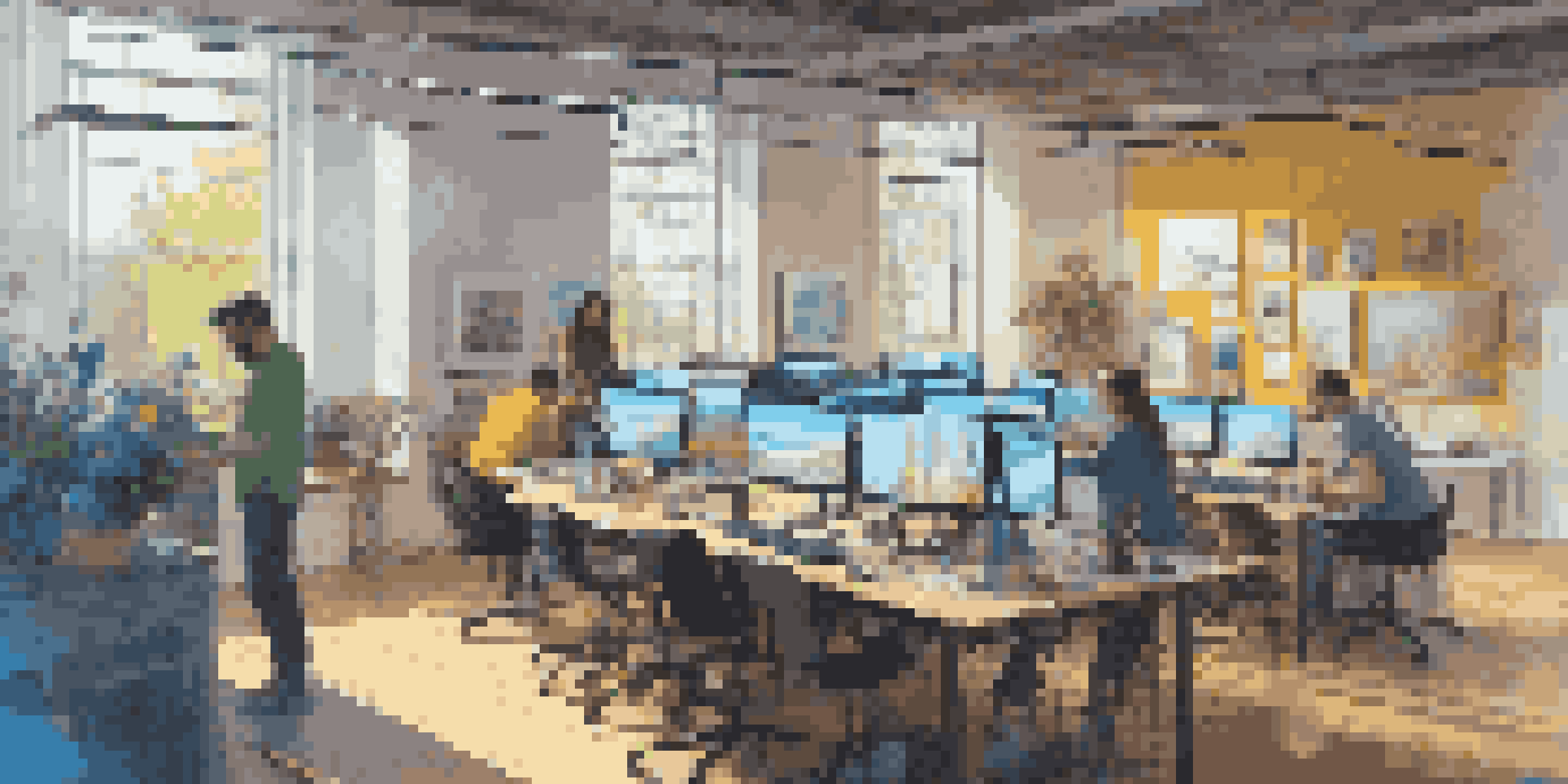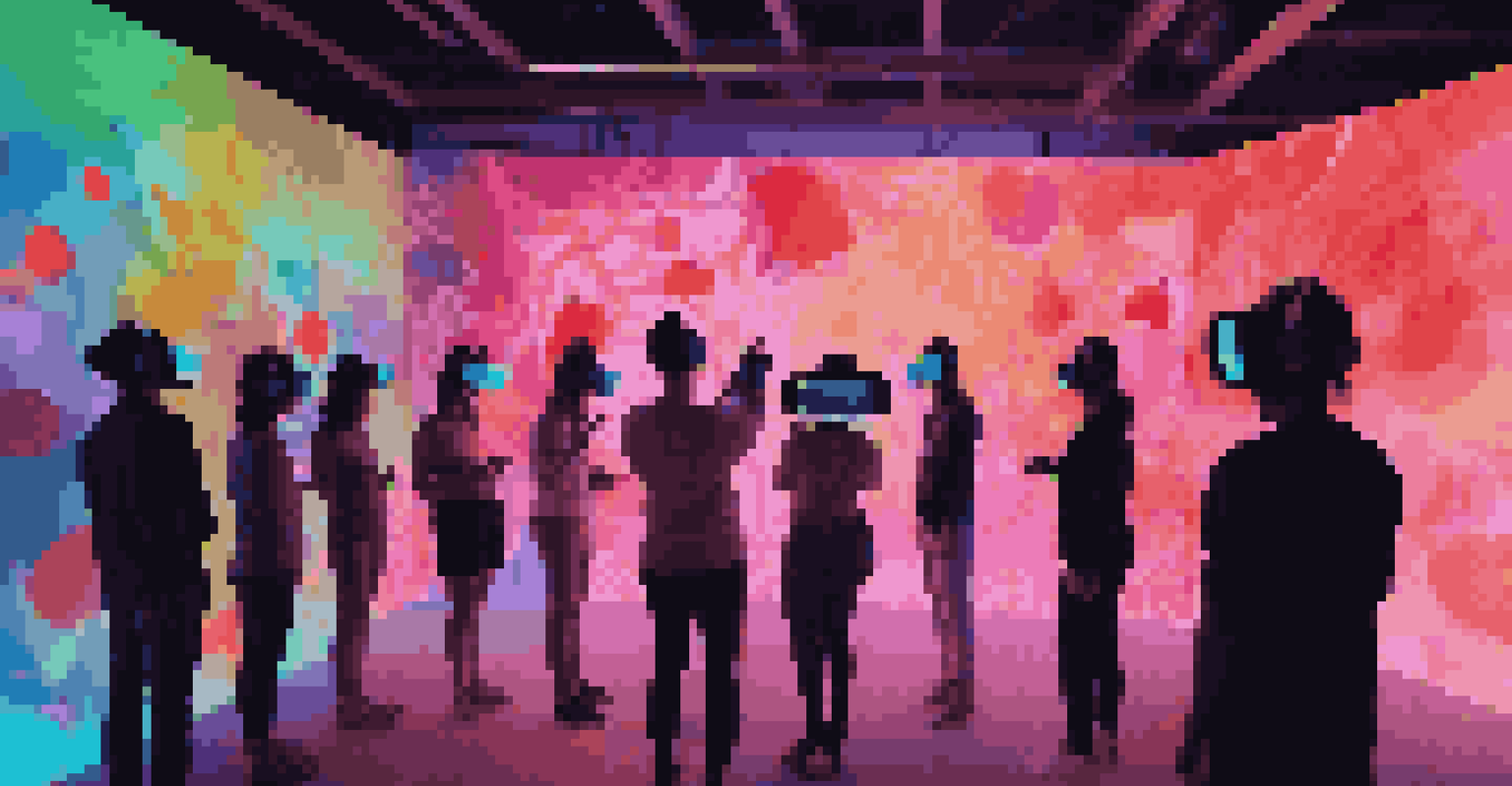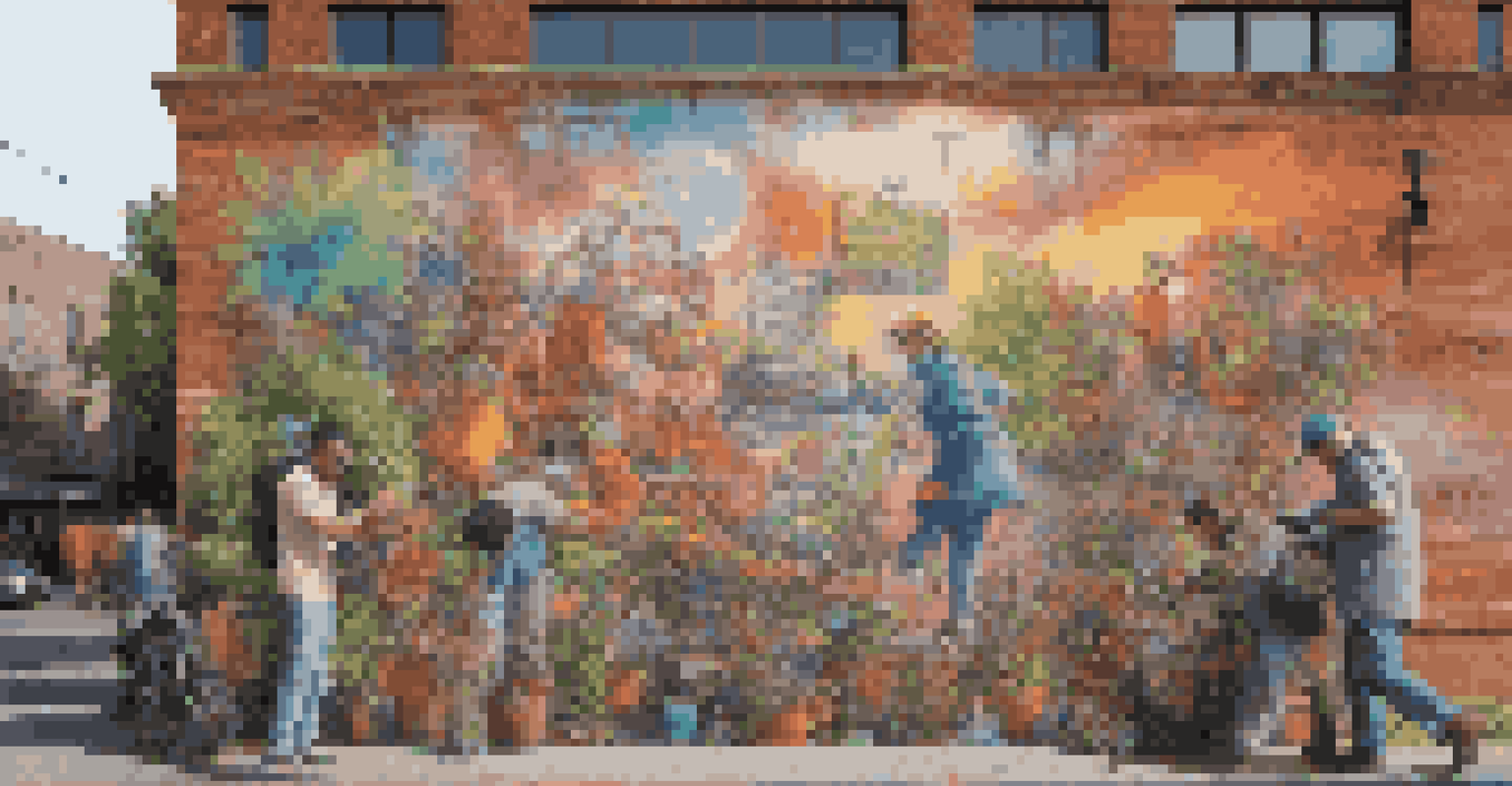The Interaction Between Art, Technology, and Human Experience

How Art Reflects Technological Advancements in Society
Art has always been a mirror reflecting the society in which it exists, and technology plays a crucial role in this reflection. For instance, the invention of photography shifted the perspective of realism in art, allowing artists to explore more abstract representations. Similarly, modern digital tools have expanded the creative possibilities, enabling artists to produce works that were previously unimaginable. This interaction not only showcases technological advancements but also provokes thought about their implications in our lives.
Art is the most beautiful of all lies; it is the most beautiful of all truths.
As technology evolves, so does the way artists express their thoughts and emotions. Take, for example, the rise of virtual reality (VR) art installations, which immerse viewers in a space where they can interact with the artwork. This kind of engagement transforms the traditional viewer-artist dynamic, making it more collaborative and participatory. The result is a deeper connection between the audience and the art, prompting reflections on how technology influences our sensory experiences.
Moreover, the accessibility of technology democratizes art creation. Platforms like social media allow artists to reach wider audiences and share their work with the world instantly. This shift empowers voices that may have been marginalized in the past, broadening the scope of what is considered art. In this way, technology not only enhances artistic expression but also fosters a more inclusive art community.
The Role of Technology in Creating New Artistic Mediums
Technology has paved the way for entirely new mediums of artistic expression, blurring the lines between art forms. Digital painting, 3D modeling, and generative art are just a few examples of how artists are harnessing technology to create innovative works. These mediums allow for a level of experimentation and creativity that traditional forms often cannot match. For instance, a digital artist can manipulate colors and shapes in ways that would be impossible with physical paint and canvas.

Furthermore, technology enables artists to push the boundaries of interactivity. Interactive installations invite viewers to become a part of the artwork, rather than just passive observers. This engagement can transform a simple gallery visit into an immersive experience where the audience influences the outcome of the art. Such interactions challenge the conventional notions of authorship and encourage a dialogue between the artist and the viewer.
Art Mirrors Technological Change
Art evolves alongside technology, reflecting societal shifts and prompting discussions about the implications of these advancements.
In addition to interactive installations, technology also facilitates the fusion of art with other disciplines, such as science and engineering. Collaborations between artists and technologists can lead to groundbreaking projects that explore complex themes like climate change or social justice. This interdisciplinary approach not only enriches the art itself but also delivers powerful messages that resonate on a personal and societal level.
Art as a Reflection of Human Experience in the Digital Age
In our increasingly digital world, art serves as a vital lens through which we can examine the human experience. Artists often draw inspiration from the complexities of modern life, including the challenges and joys brought about by technology. For example, contemporary artworks may depict themes of isolation in a hyper-connected society or celebrate the beauty found in virtual interactions. These reflections encourage us to ponder our own relationships with technology and its impacts on our lives.
The technology you use impresses no one. The experience you create with it is everything.
Moreover, art can act as a form of commentary on the societal changes spurred by technology. From street art that critiques consumerism to digital installations addressing privacy concerns, artists use their work to provoke thought and inspire action. This capacity for art to comment on current issues fosters a sense of awareness and can drive conversations around important topics. In this way, art becomes not just a form of expression but also a catalyst for social change.
Through storytelling, art captures the essence of human emotions and experiences, bridging the gap between the past and the present. Whether it's a poignant film that explores the implications of artificial intelligence or a sculpture that symbolizes the human condition in a digital era, these artistic endeavors resonate with audiences on a personal level. Ultimately, art helps us navigate the complexities of life in the digital age, reminding us of our shared humanity.
The Future of Art: Merging Creativity with Cutting-Edge Technology
As we look to the future, the merging of art and technology promises exciting possibilities. Emerging technologies like artificial intelligence (AI) and blockchain are already beginning to influence the art world. For instance, AI can assist artists in generating new ideas or even creating entire pieces, raising questions about creativity and authorship. This intersection of technology and art challenges traditional notions, pushing us to rethink what it means to be an artist in the modern era.
Blockchain technology, on the other hand, is revolutionizing the way art is bought and sold. With the rise of non-fungible tokens (NFTs), artists can now sell digital works while ensuring authenticity and ownership. This shift not only opens new revenue streams for creators but also allows collectors to invest in digital art in a secure manner. As this trend continues, we may see a significant transformation in the art market and how we value artistic expressions.
New Mediums Expand Artistic Expression
Technological innovations create new artistic mediums, allowing for greater experimentation and interactivity in art.
Additionally, as technology becomes more integrated into our daily lives, we can expect to see even more innovative collaborations between artists and technologists. Projects that combine augmented reality (AR) with public art installations can create unique experiences that engage communities in new ways. These advancements will likely shape the future of art, making it more accessible and relevant to contemporary audiences while also challenging artists to adapt and evolve.
The Emotional Connection Between Art and Technology
At its core, art is about evoking emotions, and technology can enhance that connection in profound ways. Digital tools allow artists to manipulate elements such as sound and light, creating multisensory experiences that resonate deeply with audiences. For instance, an installation that combines visual art with immersive soundscapes can transport viewers into another world, making them feel emotions that they might not encounter in everyday life. This emotional engagement can lead to a transformative experience.
Moreover, technology enables artists to reach audiences on a global scale, breaking down geographical barriers. With the click of a button, an artist can share their work with people from different cultures and backgrounds, fostering a sense of connection and empathy. This shared experience of art can transcend language and cultural differences, uniting individuals through shared feelings and stories. In this way, technology amplifies the emotional impact of art.
Finally, the rise of social media has allowed for real-time feedback and engagement between artists and their audiences. Artists can witness how their work resonates with viewers, receiving instant reactions that can inform future creations. This dynamic relationship creates a sense of community around art, as individuals share their interpretations and emotions related to specific pieces. Such interactions enrich the overall experience, reminding us that art is not only a personal journey but also a collective one.
Challenges Faced by Artists in the Digital Era
While technology offers exciting opportunities for artists, it also presents a unique set of challenges. One of the primary concerns is the oversaturation of content in the digital space. With countless artists and creators vying for attention online, standing out can feel like an uphill battle. This pressure can lead to feelings of anxiety and self-doubt among artists, affecting their creative processes and overall well-being.
Additionally, the rapid pace of technological advancements can be daunting. Artists may find it challenging to keep up with new tools and trends, which can hinder their ability to innovate. This constant need to adapt can sometimes stifle creativity, as artists may feel overwhelmed by the sheer volume of information and options available to them. Balancing artistic vision with the demands of technology requires a delicate approach.
Human Experience Shapes Art
The intersection of art and technology emphasizes the importance of human experience, ensuring that emotional connections remain central to artistic expression.
Lastly, issues of copyright and ownership have become increasingly complicated in the digital age. With the ease of sharing and reproducing art online, artists face the risk of their work being misappropriated or undervalued. Ensuring that their intellectual property is protected while still engaging with the digital landscape can be a significant concern. As the art world continues to evolve, finding ways to navigate these challenges is essential for artists' success and sustainability.
The Importance of Human Experience in Shaping Art and Technology
At the heart of the interaction between art and technology lies the human experience. As creators, artists draw inspiration from their own lives, emotions, and observations of the world around them. This deeply personal connection infuses their work with authenticity, allowing viewers to engage with it on a meaningful level. Ultimately, it is this human element that bridges the gap between technology and art, reminding us of the importance of our shared experiences.
Moreover, as technology continues to advance, it is crucial to maintain a focus on the human aspects of creation. Ensuring that technology serves to enhance, rather than replace, the human touch in art is vital. By prioritizing the emotional and experiential elements of art-making, creators can continue to foster connections that resonate deeply with audiences. This balance between technology and humanity is essential for the future of artistic expression.

In conclusion, the interplay between art, technology, and human experience is a rich and evolving relationship. As artists navigate this landscape, they have the opportunity to explore new frontiers and engage with their audiences in innovative ways. By embracing the challenges and possibilities that arise from this interaction, we can look forward to a future where art continues to reflect and shape the human experience, inspiring us all.